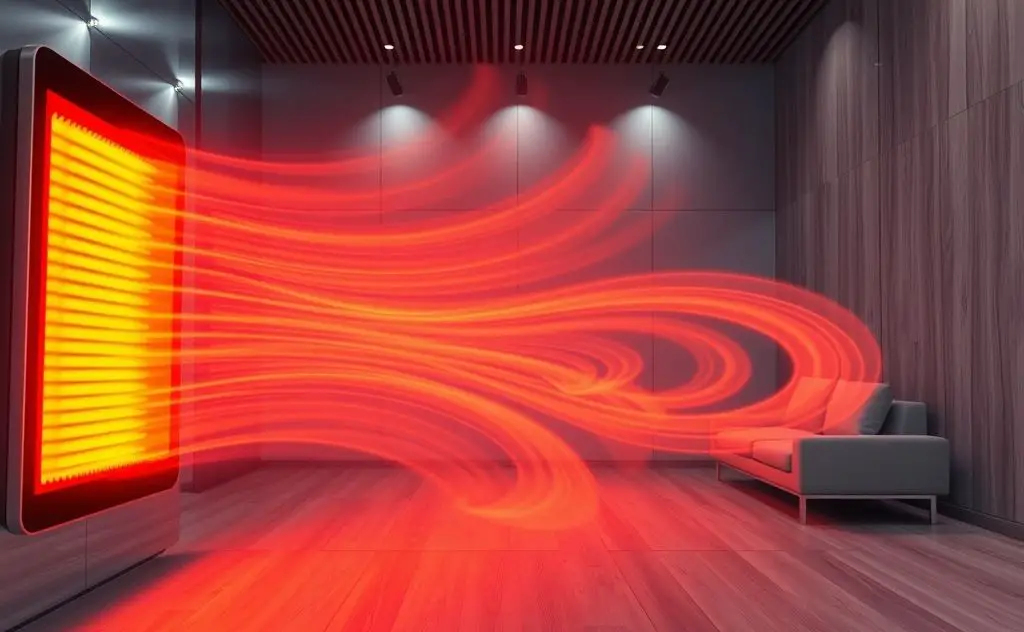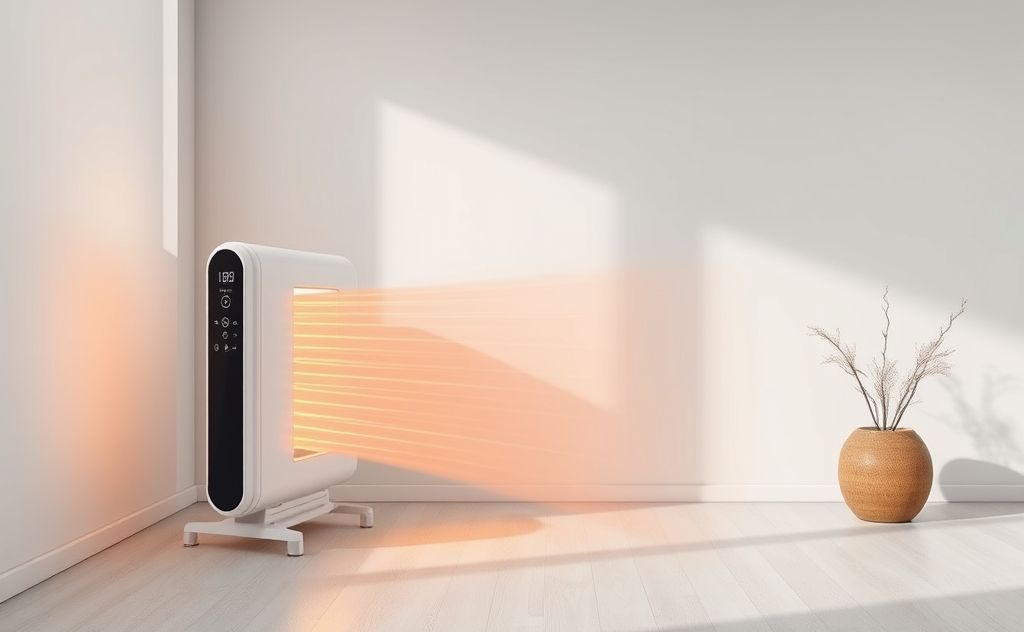Infrared heating technology: Infrared heating technology utilizes infrared radiation to directly warm objects and people in a space rather than heating the air, resulting in energy efficiency and even warmth distribution, making it ideal for residential and commercial applications.
Infrared heating technology uses electromagnetic waves to transfer heat directly to objects and people, bypassing the air. This makes it one of the most energy-efficient heating methods available today. Unlike traditional convection heaters that warm the air, infrared heaters work like the sun – providing immediate, targeted warmth.

How Infrared Heating Works
Infrared heaters emit electromagnetic radiation in the infrared spectrum (0.7-1000 microns wavelength). This radiation travels through air without heating it, then gets absorbed by solid objects which then release the heat gradually.
The Science Behind Infrared Waves
Infrared waves exist between visible light and microwaves on the electromagnetic spectrum. When these waves hit an object, they cause its molecules to vibrate, creating heat. This is the same principle that makes you feel warm in sunlight even on a cold day.
Types of Infrared Heaters by Wavelength
- Near-infrared (0.7-1.4 microns): Highest intensity, used for rapid heating
- Medium-infrared (1.4-3 microns): Balanced heat for most applications
- Far-infrared (3-1000 microns): Gentle, penetrating heat for large areas

Key Components of Infrared Heaters
While designs vary, most infrared heaters share these essential components:
| Component | Function | Common Materials |
|---|---|---|
| Heating Element | Generates infrared radiation | Quartz, ceramic, metal alloys |
| Reflector | Directs infrared waves | Aluminum, stainless steel |
| Housing | Protects components | Steel, aluminum, plastic |
Comparing Heating Elements
The heating element determines performance characteristics. Ceramic elements provide even heat distribution, while quartz elements heat up and cool down faster. Metal elements offer durability for industrial applications.
Infrared vs Other Heating Technologies
Infrared heating differs fundamentally from conventional methods:
Infrared vs Convection Heating
Convection heaters warm air which then circulates, leading to heat stratification (warm air rises) and energy loss through drafts. Infrared heats objects directly, maintaining consistent warmth at floor level.
Infrared vs Radiant Heating
While both use radiation, traditional radiant heaters (like oil-filled radiators) primarily warm nearby air. True infrared targets specific surfaces with minimal air heating.
Energy Efficiency Advantages
Infrared heaters can be 30-50% more efficient than conventional systems because:
- No energy wasted heating unoccupied air space
- Instant heat means no warm-up period
- Can zone heat specific areas
- Lower operating temperatures possible
According to the U.S. Department of Energy, targeted heating can significantly reduce energy costs in spaces where full-room heating isn’t necessary.
Practical Applications
Infrared heating excels in these scenarios:
Residential Uses
- Bathroom heating (quick, moisture-resistant warmth)
- Garage workshops (zone heating work areas)
- Patios (outdoor comfort without wind affecting heat)
Commercial/Industrial Uses
- Warehouses (high ceilings make convection inefficient)
- Restaurant patios (customer comfort without heat loss)
- Manufacturing (drying paints, curing materials)
Safety Considerations
While infrared heaters are generally safe, proper use is important:
- Maintain clearance from flammable materials
- Use models with tip-over protection
- Choose appropriate wattage for space size
- Install at proper height (especially important for wall-mounted units)
The Consumer Product Safety Commission recommends looking for UL certification when purchasing infrared heaters.
Environmental Impact
Electric infrared heaters produce zero emissions at point of use. When powered by renewable energy, they offer completely clean heating. Even when using grid electricity, their efficiency reduces overall energy consumption compared to conventional heaters.
Comparison of Fuel Sources
| Fuel Type | CO2 Emissions | Notes |
|---|---|---|
| Electric Infrared | 0 at point of use | Depends on power source |
| Propane Infrared | 139 lbs/MMBtu | Cleanest fossil fuel option |
| Natural Gas Infrared | 117 lbs/MMBtu | Most common commercial option |
Choosing an Infrared Heater
Consider these factors when selecting an infrared heater:
Size and Power Requirements
Calculate your space’s square footage and insulation quality. As a rule of thumb, you need about 10 watts per square foot for well-insulated spaces.
Portable vs Fixed Installation
Portable units offer flexibility but less power. Fixed installations provide more consistent heating for dedicated spaces.
Additional Features
- Thermostats for temperature control
- Timers for energy savings
- Oscillation for wider coverage
- Remote controls for convenience
For those considering alternative heating options, our comparison of blue flame vs infrared heaters provides additional insights.
